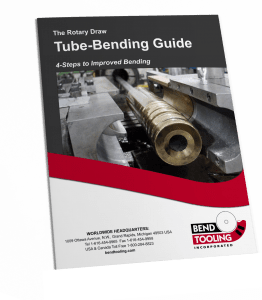A tube is a single piece of tubing, which is a general term for a wide range of materials that are hollow in form. Most tubing is circular in cross-section, though square and rectangular tubing is common, and is made of either plastic or metal. Of primary interest in this article is metal tubing, because it must be formed — as in the rotary-draw bending process, for example — to produce a finished tubular component. (Of course, almost all plastic tubular components are manufactured from raw material into their finished shape. Thus, plastic tubing is seldom “formed” in the same sense as metal tubing and occupies a different universe in industry.)
Metal tubing is typically manufactured by roll-forming a strip of sheet metal, although it can also be extruded or drawn. (Extruded and drawn tubing typically feature very heavy walls or complex cross-sections and are not frequently encountered in tube-bending.) Once manufactured metal tubing can be formed into a finished part by a variety of processes including flaring, swaging, beading, hydroforming, and, of course, bending.
The fundamental specifications of a tube are outside diameter, wall thickness, and material. Occasionally tubing, especially if it is extruded or drawn, will be specified without a wall thickness and instead by outside and inside diameter. All pipe is tubing and is mostly distinguished by the manner of its specification, in which nominal values are used instead of true ones to identify the outside diameter and wall thickness. (See pipe.)

